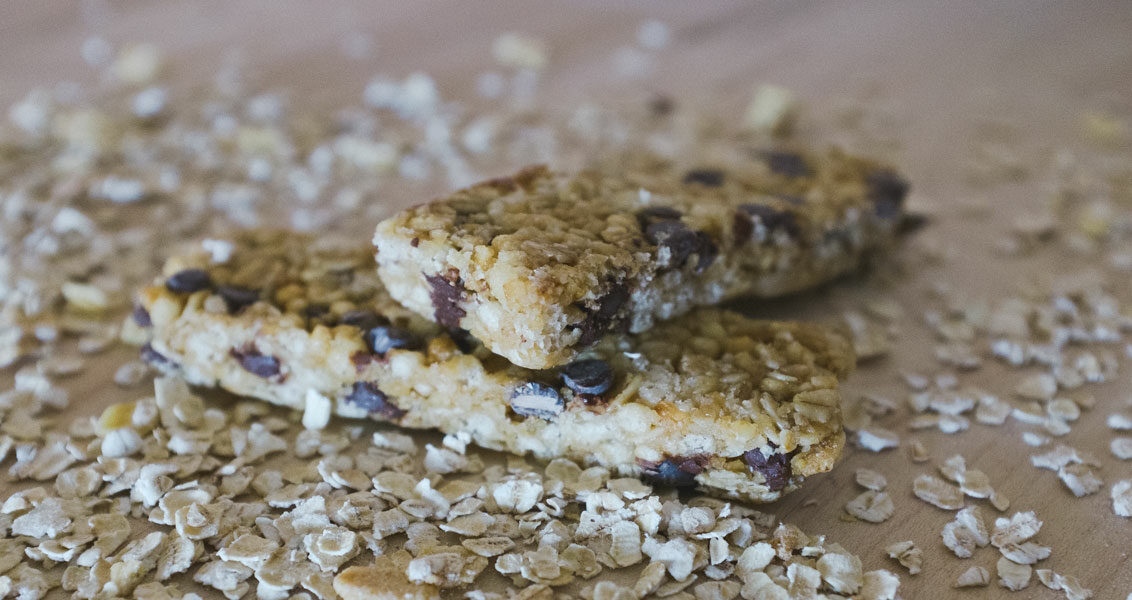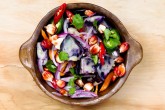
If there’s one thing gym rats like to talk about more than tanning and laundry, it’s nutrition. With so many pills, powders, and potions to choose from, it seems like everyone’s on the prowl for the magic combination that’ll take their fat-burning and muscle-building game to Schwarzenegger proportions. But what about the rest of us? Do recreational exercisers and athletes really need all that processed energy razzmatazz? Here’s what certified dietitian Nancy Clark has to say in this blog post on the topic:
1. Pre-exercise energy bars aren’t worth the price.
According to Clark, when it comes to filling the tank with fuel before you get your sweat on, a carb is a carb. In other words, it’s more about getting the right type of pre-workout energy (i.e., carbohydrates) than it is to get a specific type of carbohydrate (e.g., an energy bar). In fact, chomping on expensive power bars before exercising is—by Clark’s estimation—a waste of money: “…you could less expensively consume 250 calories of Fig Newtons or a granola bar,” she writes. The idea is to consume something that’ll digest easily and won’t cause any mid-workout tummy troubles—and you don’t need a pricey energy bar to meet those requirements. To drive home the cost point, Clark even created a chart showing the per-100-calorie cost of several different snacks. According to her calculations, a PowerBar Performance Energy Bar runs about $0.62 per 100 calories. By contrast, a Nature Valley granola bar is $0.17 per 100 calories.
2. “Gel” is just another way to spell “sugar.”
Athletes—particularly endurance athletes—love to talk about gels. (“No, no, strawberry is the worst; you’ve gotta go with the mocha. Oh, and it goes great with blueberry sports drink. Weird, I know, but dude, you’ve just gotta give it a chance.”) From personal experience, I can tell you that many long-distance runners swear by them. (“Without that gel at mile 16, I totally would have bonked, man.”) But don’t be fooled; these tiny packets of concentrated calories are really nothing more than quick energy boosts in the form of sugar. And theoretically, you could get that same boost from any number of sweet substances, including “gummy candies (Swedish fish, gummy bears), Twizzlers, gum drops, Peppermint Patties, marshmallows, Whoppers, M&Ms, maple sugar candy, and/or swigs of honey or maple syrup,” Clark says. The key is consuming 200 to 300 calories per hour—depending on your weight and how hard you’re exercising—after the first hour of exercise.
3. Real food gives you more electrolyte bang for your buck.
Hopefully you’re already well aware that drinking Gatorade isn’t the only way to replenish electrolytes lost through perspiration—although those “Is It in You?” commercials were pretty dang convincing. But in reality—as Clark points out in her article—sports drinks like Gatorade and Powerade aren’t very electrolyte-rich. In fact, one dill pickle spear contains 350 mg of sodium—150 mg more than eight ounces of sports drink. And considering that heavy-sweaters can lose 1,000 to 3,000 mg of sodium per hour of intense exercise, every milligram counts.
Whether you’re pumping iron or just doing some hard-core fist-pumping, nutrition plays a major role in ensuring you meet your full athletic potential. But even the best nutritional plan can’t always save you from injuries and other workout setbacks. Want to get to—and stay at—the top of your fitness game? Find a PT in your area who can help make sure you’re firing on all cylinders.


